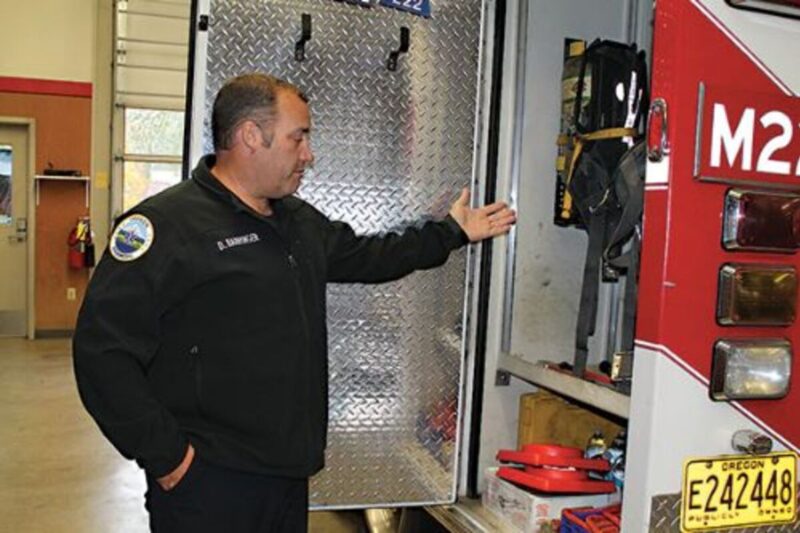Sean C. Morgan
The Sweet Home Fire and Ambulance District is searching for a used ambulance to help shore up its aging medical transport vehicle fleet.
The district’s newest ambulance is a 2007 Chevrolet, and in the 2014-15 budget message, retired Fire Chief Mike Beaver said a new ambulance is a priority this year if funding could be found. The district was unable to win a grant to help pay for the new ambulance.
In past years, the district had attempted to replace ambulances on a regular cycle, but budgets began tightening with the recession, beginning in 2008. The district’s budget is still tight, and ambulances are showing their mileage.
Additionally, call volumes are running high, said Fire Chief Dave Barringer. The district had received 2,463 calls as of Friday. Last year, it responded to a total of 2,483 calls, a record for total calls.
The district had 2,212 medical calls in 2013, also a record.
In the past month, the district has been down to two functioning ambulances out of four on two occasions. It has had one ambulance down long term, operating with three right now.
The district normally staffs two ambulances. A third is crewed by calling back medics who are off duty. Absent crews on callback, quick response teams respond to additional calls until an ambulance and crew are available; and Lebanon Fire District may assist.
A 2004 Ford has been undergoing repairs, said Barringer. The ambulance has a specialized 6-liter engine that is challenging to repair, and the mechanic has been unable to complete the repairs quickly.
Barringer had hoped to get that ambulance back on the road before sending, the 2007 Chevrolet, the district’s workhorse, which has 141,000 miles, in for new brakes and tires.
Last month, as the Ford continued to remain parked, the district sent the Chevrolet to the shop for several hours to get the new tires and brakes, Barringer said. During that time, the district responded to four medical calls. It dispatched crews on its 2002 Ford, which has 171,000 miles, and its seldom-used 1996 Chevrolet, which has 49,000 miles.
Barringer responded twice on a quick response team, and Lebanon Fire District responded twice to take over the calls.
On Nov. 10, the 2007 Chevrolet was transporting a patient to Samaritan Lebanon Community Hospital when it broke down near Weirich Drive just outside of Lebanon, Barringer said. Lebanon Fire District responded with an ambulance crew to complete the transport and a fire engine to investigate smoke in the engine compartment, which was caused by a frozen air conditioner compressor.
The ambulance was out of service for repairs until Nov. 12, Barringer said, but everything went smoothly during both of the situations.
That ambulance also requires some front-end work, Barringer said.
The district has about $61,000 in its equipment reserve fund, and the board has authorized Barringer to look for a used ambulance with those funds.
A new ambulance that meets the department’s needs would cost about $160,000, Barringer said, while he is seeing prices between $30,000 and $65,000 for used ambulances.
He is looking for a four-wheel drive ambulance, which has complicated the search, he said. Sweet Home is a unique district, with a variety of terrain and weather. It is large, and hospital trips are long. Weather conditions can change within short distances.
Among the problems it can create, an ambulance can move from clear pavement to snow just by climbing Marks Ridge at times during the winter, Barringer said. He would prefer a four-wheel drive to help in these situations, avoiding potential delays, like installing or removing chains.
The 1996 Chevrolet is a four-wheel drive, but it has a small ambulance box, making it ideal for moving around narrow mountain roads but too small for general use, Barringer said. The ambulance box is laid out differently, and average-sized medics cannot stand up inside it.
Plus, in addition to medical calls, paid paramedics are the first to respond to fire calls, and they must carry fire gear on the ambulances, which increases capacity requirements.





